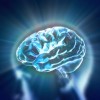Researchers Extract Stem Cells from Rat Brains Using Magnetism
Not only does extracting stem cells from a brain using a magnet sound painful, it seems impossible as well. However, this is exactly what researchers from the University of Oxford managed to do in a recent rat study. It may sound bizarre, but this research and magnetism could help in the battle against ailments like Parkinson's disease and multiple sclerosis.
How it was possible
Pulling the stem cells out of a rat's brain wasn't as simple as holding a few strong magnets over the rodent's head and waiting. Neural stem cells, or NSCs, aren't naturally magnetic. As a result, researcher Edman Tsang and his colleagues ended up injecting magnetic nanoparticles into the rats' lateral ventricles, according to New Scientist. The nanoparticles included antibodies that helped them bond to the NSCs present in the rodent brain.
It took six hours for the nanoparticles to tightly bond to the NSCs. Then, using a magnetic field, the researchers brought the NSCs together, which made it easier to insert a syringe in the brain and extract them. Although a needle in the brain may sound unpleasant, the rats returned to their normal behavior hours after the procedure, as if it had never happened.
"Harmlessly extracting neural stem cells from the living mammalian brain is an advancement," Gianvito Martino, a neural stem cell researcher at Italy's San Raffaele Hospital, told the news source.
Not ready for humans
Performing this surgery on a rat is one thing; extracting NSCs from a human brain is another. For starters, these stem cells are less abundant in human brains than they are in those of rats. Still, there's the hope that one day, researchers will be able to pull NCSs from human brains and use them to counter the harmful affects of diseases like Parkinson's.
The power of stem cells
According to the National Institutes of Health, stem cells hold great potential. Pluripotent stem cells specifically could be used to create replacement cells and tissues for patients with Parkinson's disease, heart disease, diabetes, arthritis and spinal cord injuries.
Whether strong magnets will play a role in combating these ailments is unknown at this time. However, the Oxford research certainly shows that magnetism could prove very useful should scientists ever try this procedure on humans and do so in a way that reduces the chance of complications.
What This Discovery Means and More with Apex Magnets
We are constantly on the lookout for new magnet discoveries. A year after writing this blog, we wrote about another update of stem cells being used with magnetism to cure diseases, you can read it here. For more updates on magnetism, browse our neodymium magnet information and magnet facts sections of the blog or subscribe to our newsletter today.

